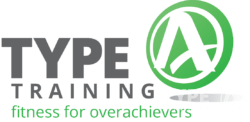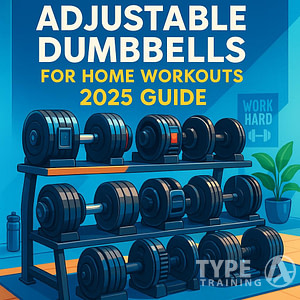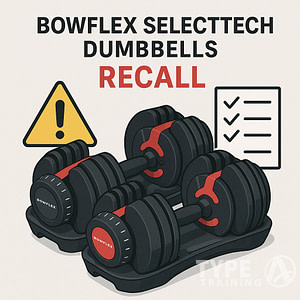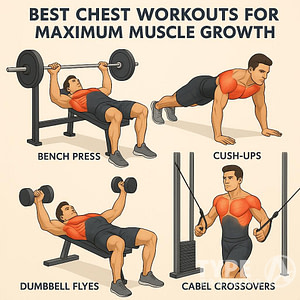Beginning a fitness journey can be intimidating. A full-body kettlebell workout is an excellent starting point for beginners.
Kettlebell exercises are effective at building muscle and burning fat. They offer a compact, efficient way to get fit at home or the gym.
In just 20-30 minutes, a kettlebell routine can target multiple muscle groups. By integrating movements like lunges, squats, and rows, you’ll experience a comprehensive workout without requiring extensive equipment.
Popular posts:
If you’re looking for a flexible and straightforward approach to fitness, try incorporating a full-body kettlebell workout into your routine. Check out this 20-minute kettlebell routine to get started and stay committed to your fitness journey!
Benefits of Kettlebell Training
Kettlebell training offers a wide range of benefits that can help you achieve your fitness goals.
Strength and Power:
Kettlebell workouts are an efficient way to build functional strength. The unique shape of the kettlebell helps develop grip strength and explosive power, crucial for athletes looking to enhance their performance.
Endurance and Conditioning:
Incorporating kettlebells into your routine improves both aerobic and anaerobic conditioning. You can expect enhanced endurance as kettlebell exercises often involve high-repetition movements.
Core Strength:
Many kettlebell exercises, such as swings and Turkish get-ups, demand significant core engagement. This not only strengthens your core muscles but also improves balance and coordination.
| Benefit | Description |
|---|---|
| Strength | Builds functional strength and grip strength |
| Power | Enhances explosive power |
| Endurance | Improves aerobic and anaerobic conditioning |
| Core Strength | Increases core engagement, balance, and coordination |
Fat Loss and Calorie Burn:
Kettlebell training can contribute to fat loss by providing a high-calorie burn. A high-intensity kettlebell workout can burn significant calories, aiding in weight management.
Efficiency:
Kettlebell workouts combine strength training and cardiovascular exercise, making them highly efficient. You can achieve full-body workouts that target multiple muscle groups in a relatively short amount of time.
Safety:
When performed with proper technique, kettlebell exercises are safe and can help prevent injuries by improving mobility and joint stability.
Understanding Kettlebell Basics
When starting with kettlebell training, it’s crucial to grasp the essentials such as the structure of a kettlebell, choosing the right weight, and familiarizing yourself with key terms and concepts.
Anatomy of a Kettlebell
A kettlebell consists of three main parts: the handle, the ball, and the base. The handle allows you to grip the kettlebell and facilitates the swinging motion. The ball or body is the weight itself, and the base provides stability when the kettlebell is resting on the floor.
Kettlebells come in various materials like cast iron and competition-style steel. Each type can affect your grip and handling. Understanding the structure helps you execute exercises correctly and safely.
Selecting Your Kettlebell Weight
Choosing the right kettlebell weight is essential for effective training. Beginners typically start with a kettlebell ranging between 8 kg (18 lbs) to 12 kg (26 lbs) for women and 12 kg (26 lbs) to 16 kg (35 lbs) for men. Factors such as your fitness level and exercise routine impact the weight you should select.
Starting with a manageable weight ensures proper form and prevents injury. As your strength improves, you can gradually increase the kettlebell weight to challenge your muscles further.
Basic Terms and Concepts
Familiarize yourself with basic terms and concepts used in kettlebell training. Swings, cleans, and snatches are foundational movements that target different muscle groups. The swing focuses on the posterior chain, including the hamstrings and glutes, while the clean and snatch emphasize explosive power and coordination.
Understand terms like rack position and lockout, which describe specific positions during exercises. The rack position involves holding the kettlebell at shoulder level, while lockout refers to the completion of a movement with the arm fully extended.
Grasping these basic concepts and terminologies ensures you’re performing exercises correctly and effectively, maximizing the benefits of your kettlebell workouts.
10 Fundamental Kettlebell Movements
Kettlebell workouts are renowned for their efficiency and effectiveness in improving strength, endurance, and mobility. Here are ten fundamental movements that are essential for anyone beginning with kettlebell training.
1. The Kettlebell Swing
The swing is the foundation of many kettlebell exercises. Begin with your feet shoulder-width apart. Grip the kettlebell handle with both hands, hinge at the hips, and swing the kettlebell back between your legs. Drive your hips forward to propel the kettlebell to chest height. Maintain a neutral spine and tight core throughout. The motion should be powered by your hips, not your arms.
2. Mastering the Squat and Lunge
For the goblet squat, hold the kettlebell by the horns at chest level. Keep your chest up and squat down, pushing your knees out. Rise back up while maintaining control of the kettlebell.
In a kettlebell lunge, hold the kettlebell at your side or in a rack position. Step forward into a lunge, keeping your back straight and core engaged. Push through your front heel to return to the starting position.
3. Developing a Strong Deadlift
Stand with feet hip-width apart and the kettlebell between your feet. Bend at the hips and knees to grip the handle. Keep your back straight and engage your core. Lift the kettlebell by extending your hips and knees, ensuring your spine remains neutral. Lower the kettlebell back to the ground in a controlled manner.
4. Perfecting the Clean and Press
Start with the kettlebell on the ground. Clean the kettlebell to your shoulder by driving through your hips and pulling the kettlebell close to your body. Once at shoulder height, press the kettlebell overhead, ensuring you keep your core tight. Lower the kettlebell back to the shoulder and then to the ground with control.
5. Kettlebell Shoulder Halo
Hold the kettlebell by the horns with the base pointing up. Circle the kettlebell around your head, passing it from one hand to the other. Keep your elbows close to your head and your core engaged. This exercise is excellent for shoulder mobility and stability.
6. Single Leg Kettlebell Lunge
Begin by standing with the kettlebell in the rack position. Step back with one leg into a lunge, keeping the kettlebell stable. Maintain an upright posture and engage your core. Press through the heel of your front foot to return to standing. This exercise challenges your balance and strengthens your legs.
7. Kettlebell Figure-8
Stand with your feet shoulder-width apart. Pass the kettlebell between your legs and around one leg in a figure-8 pattern, switching hands as you pass the kettlebell. Maintain a slight bend in your knees and keep your core tight throughout the movement. This exercise enhances coordination and rotational strength.
8. Kettlebell Windmill
Hold the kettlebell overhead with one arm. Turn your feet out at about a 45-degree angle. Slide your free hand down your leg while pushing your hips back and leaning to the side. Keep your eyes on the kettlebell and engage your core. This move improves shoulder stability and builds core strength.
9. Turkish Get-Up
Lie on your back with a kettlebell in one hand, arm locked out. Bend the knee on the same side and keep the other leg extended. Roll onto your elbow, then to your hand, and push through to stand up while keeping the kettlebell overhead. Reverse the movement to return to the starting position. This full-body exercise improves mobility and stability.
10. Kettlebell Snatch
Begin with the kettlebell between your feet. Grip the handle and swing the kettlebell back between your legs. Explosively extend your hips and pull the kettlebell overhead in one continuous motion. Lock out your arm at the top and engage your core. Lower the kettlebell back to the starting position with control. The snatch builds explosive power and endurance.
Building a Workout Routine
Creating an effective kettlebell workout plan tailored to your fitness level and goals involves balancing muscle groups and incorporating high-intensity intervals to maximize calorie burn and engage stabilizer muscles.
Creating a Balanced Routine
When crafting your routine, it’s essential to include both compound movements and isolation exercises.
Compound movements like kettlebell swings, goblet squats, and deadlifts target multiple muscle groups, ensuring that you’re engaging your entire body. These exercises improve overall strength and functional fitness.
Isolation exercises can also play an important role. Moves like kettlebell halos and bicep curls focus on specific muscles, adding variety and preventing muscle imbalances.
Equally important is the order of exercises. Start with large, compound movements and finish with the isolation exercises. This method ensures that you are effectively using your energy and maintaining form throughout the workout.
Consider incorporating circuits, such as performing a set of kettlebell swings, followed by goblet squats, and then kettlebell rows. This keeps your workout dynamic and engaging while boosting calorie burn.
Incorporating High-Intensity Intervals
High-intensity interval training (HIIT) is an effective way to elevate your heart rate and enhance your kettlebell workouts.
Integrate exercises like jumping jacks, kettlebell swings, and burpees in short, intense bursts, followed by brief rest periods. This method boosts cardiovascular fitness and accelerates calorie burn.
There are different HIIT formats you can use. For instance, EMOM (Every Minute on the Minute) involves performing a specific number of reps of an exercise, like kettlebell goblet squats, at the start of each minute. Rest for the remainder of the minute and repeat.
Another option is Tabata, which includes 20 seconds of intense work followed by 10 seconds of rest, repeated for four minutes.
Combining HIIT with your kettlebell routine can also better engage your stabilizer muscles, enhancing overall strength and endurance.
Mixing formats ensures variety, keeping your workouts interesting and challenging.
Sample HIIT Kettlebell Workouts
Beginner HIIT Routine:
For beginners, it’s essential to start with basic movements. Here’s a simple workout:
- Kettlebell Swings:
- 30 seconds work, 30 seconds rest
- Goblet Squats:
- 30 seconds work, 30 seconds rest
- Kettlebell Presses:
- 30 seconds work, 30 seconds rest
Repeat this circuit 3-4 times. Ensure to maintain proper form.
Advanced HIIT Routine:
If you’re more experienced, this advanced routine might be more challenging:
- Kettlebell Snatches:
- 40 seconds work, 20 seconds rest
- Cleans:
- 40 seconds work, 20 seconds rest
- Turkish Get-Ups:
- 40 seconds work, 20 seconds rest
Complete 4-5 rounds of this circuit to push your limits.
Workout Structure:
A typical HIIT session includes:
- Warm-Up:
- 5-10 minutes of dynamic stretching or light cardio
- Work Intervals:
- 30-40 seconds of high-intensity effort
- Rest Intervals:
- 20-30 seconds of rest
- Cool-Down:
- 5-10 minutes of stretching or foam rolling
Proper warm-up and cool-down are essential to prevent injuries and ensure optimal performance.
For detailed routines, check out these resources on kettlebell HIIT workouts and kettlebell HIIT workout routine.
Sample EMOM Kettlebell Workouts
EMOM Basics
EMOM stands for “Every Minute On the Minute.” In these workouts, you perform a specific number of reps for a particular exercise at the start of each minute. Any time left within the minute is used for rest. This structure helps build endurance, strength, and cardio fitness effectively.
Kettlebells are particularly suited for EMOM because they offer a mix of strength and conditioning exercises.
Full-Body EMOM Routine
Here’s a basic routine you can try to target different muscle groups with kettlebells. Perform each exercise for one minute, then rest for whatever time you have left within that minute before moving to the next exercise.
- Minute 1: 10 Kettlebell Swings
- Minute 2: 10 Goblet Squats
- Minute 3: 8 Kettlebell Deadlifts
- Minute 4: 12 Kettlebell Shoulder Presses
- Minute 5: 10 Kettlebell Rows
Repeat this circuit for 20 minutes for a full-body workout. This routine not only enhances strength but also improves cardiovascular endurance.
Progression Tips
To progress with EMOM kettlebell workouts, consider the following tips:
- Increase Weight: Gradually increase the kettlebell weight as you get stronger.
- Complexity: Add more complex movements, like Turkish Get-Ups or Windmills, to challenge your body.
- Repetitions: Increase the number of reps per exercise to make the workout more demanding.
By following these guidelines, you can ensure continuous improvement and keep your workouts challenging and effective.
For more detailed EMOM kettlebell workouts, you can explore 30 Kettlebell Workouts or check out other resources to expand your routine variety.
Safety Tips and Common Mistakes to Avoid
Proper Form:
Maintaining proper form during kettlebell exercises is crucial to preventing injury. Ensure your back remains straight and core engaged during exercises like kettlebell swings and deadlifts. Avoid arching your back or letting your knees cave in. Watching yourself in a mirror or recording your workout can help identify and correct form issues.
Common Mistakes:
- Choosing the Wrong Weight:
- Too Heavy: Starting with a weight that’s too heavy can compromise your form and lead to injury. Begin with a manageable weight and increase as your strength improves.
- Too Light: Using a weight that’s too light won’t provide the necessary resistance for muscle growth.
- Incorrect Grip:
- Ensure you have a firm grip on the kettlebell handle. An incorrect grip can lead to loss of control, particularly during dynamic movements like swings and snatches.
- Improper Hand Insertion:
- Make sure your hand is properly inserted inside the handle to maintain control and prevent wrist strain.
Recovery and Injury Prevention:
Adequate recovery is as important as the workout itself. Give your muscles time to repair by incorporating rest days into your routine. Overtraining can lead to fatigue, decreased performance, and injury.
| Mistake | Solution |
|---|---|
| Choosing too heavy a weight | Start with a lighter weight; progress gradually |
| Incorrect grip | Ensure a firm, proper grip on the handle |
| Overtraining | Incorporate rest days and listen to your body |
| Poor form | Engage your core, maintain a straight back, and monitor your form |
Advanced Techniques and Variations
Incorporating advanced techniques and variations into your kettlebell training can significantly enhance your strength, coordination, and explosive power. This section explores complex movements and the benefits of rotational and ballistic exercises.
Exploring Complex Movements
Complex movements in kettlebell training can elevate your routine by targeting multiple muscle groups simultaneously. Movements like the Turkish Get-Up require strength, coordination, and stability. This exercise involves transitioning from lying on the ground to a standing position while holding a kettlebell overhead.
The Renegade Row is another advanced technique. Starting in a push-up position, you row one kettlebell to your hip while stabilizing your body with the other arm. This move targets the core, shoulders, and back, improving overall athletic performance.
Utilizing Rotational and Ballistic Exercises
Rotational and ballistic exercises add a dynamic element to your kettlebell routine. Exercises like the Russian Twist enhance rotational strength, targeting the obliques and improving core stability. Sit on the floor with knees bent, lean back slightly, and rotate your torso from side to side while holding a kettlebell.
Ballistic exercises such as the clean and jerk or snatch are essential for developing explosive power. These movements involve rapid, forceful actions that challenge your muscles and nervous system.
How should a beginner progress with kettlebell training for weight loss?
Start with lighter weights and focus on high repetitions. Then, gradually increase the weight and intensity of your workouts.
Integrate kettlebell exercises like swings and snatches. These exercises involve multiple muscle groups to maximize calorie burn.















